27 Dec Creating a Sexual Harassment Training Program That Works
With so many sexual harassment stories in the news, it’s an important time to review your sexual harassment training protocols. Management and employees need to know what defines sexual harassment and how to avoid issues. It’s essential to create a sexual harassment training program, to ensure your employees’ safety.
Sexual Harassment Defined
Legally, two categories of sexual harassment exist: quid pro quo and hostile work environment.
Quid pro quo refers to offering work benefits, such as a promotion or raise, for a sexual favor, or threatening demotion, discipline, or termination if the person does not comply. Typically, this occurs between a higher ranking person, like a supervisor, and a worker.
Actions that create a situation where an employee feels harassed or embarrassed can lead to a hostile work environment. Inappropriate behavior can include offensive jokes, unwanted touching, or explicit posters on the wall. Obviously, many other actions could apply, highlighting the importance of eliminating grey areas within the workplace.
Creating a Harassment-Free Workplace
As employers, you’re obligated to provide a safe work environment, including one free from sexual harassment. If you do not do so, employees may hold your business liable for an offending individual’s actions. The following suggestions can demonstrate that you’ve done what you can to prevent sexual harassment in your workplace.
Develop & Communicate Policy
In today’s workplace, it is critical that your business develops clear policies to show employees your company will not tolerate sexual harassment. The Equal Employment Opportunity Commission received 6,758 sexual harassment claims in 2016 with monetary settlement benefits of $40.7 million.
The highest reported sexual harassment lawsuit awarded $168 million to the plaintiff, but countless others never make it into the news. Many people settle their claims outside of the EEOC and courts.
Your business also needs to provide a safe procedure for reporting incidents without retaliation. The EEOC also reports that charges of retaliation more than doubled from 1997 to 2015.
Draft a policy and discuss it with your attorney. Define unacceptable behavior and illegal behavior according to local, state, and federal laws. Also describe what constitutes retaliatory behavior and the consequences. Once finalized, distribute it to all employees and add it to your employee handbook.
Promote a harassment-free culture with defined consequences for inappropriate behavior and apply them consistently and universally. Everyone must remain accountable for their actions.
Provide Training
Training should include executives to demonstrate top-down commitment to workplace safety. The EEOC recommends mandatory interactive training facilitated by a qualified trainer.
A qualified trainer relies on specific examples of severe and subtle sexual harassment instead of generalized material. It also includes “bystander” training so a person knows what to do if they witness harassing behavior.
The minimal cost of professional training reduces the risk of lawsuits, a diminished brand reputation, and employee discontent and attrition. Professional trainers focus on your company’s values and expectations and positive behaviors and actions, rather than rules.
If in-person training is not possible, consider an online alternative with an interactive component. You can also conduct small sessions so it does not interfere with daily duties.
If it has been some time since training occurred, retrain so everyone understands definitions and procedures. Each business has risk factors unique to their operations and these can shift.
Supervisors need to focus on risks to reduce the likelihood of problems. They also need to know precisely how to respond to a complaint and how to handle confidentiality. If a supervisor becomes aware of an issue, they must follow-up even if the person does not file a complaint. Otherwise, people may interpret it as condoning the behavior.
Harassment can include electronic communications, phone calls, uninvited contact outside the workplace, intimidation, and touching. Each person must know that they can ask the person to stop and know what to do next if they don’t. Also provide a way to bypass a direct supervisor if they’re involved in the complaint.
Act Swiftly
If a person files a complaint, investigate it immediately and take it very seriously. Your business has an ethical and legal obligation to do so.
Once a person reports harassment, you must take measures to stop it and prevent retaliation. Tell the accused about the complaint and that your company will not tolerate unethical actions or retaliation. Assure them they will receive a fair investigation.
Gather evidence from witnesses and statements from both parties. Use open-ended questions and try to verify or disprove allegations with facts. Approach all people involved respectfully, patiently, and openly.
Once you’ve accumulated your information, try to reach a decision. Discuss the implications with HR and your attorney and then reveal your decision, workplace changes such as new duties or location, or disciplinary actions.
Doing all that you can to prevent sexual harassment protects your reputation and employees and creates a pleasant workplace. Everyone is more likely to perform well when they know where they stand and your business eliminates unnecessary risk. It’s a win-win situation.


No Comments